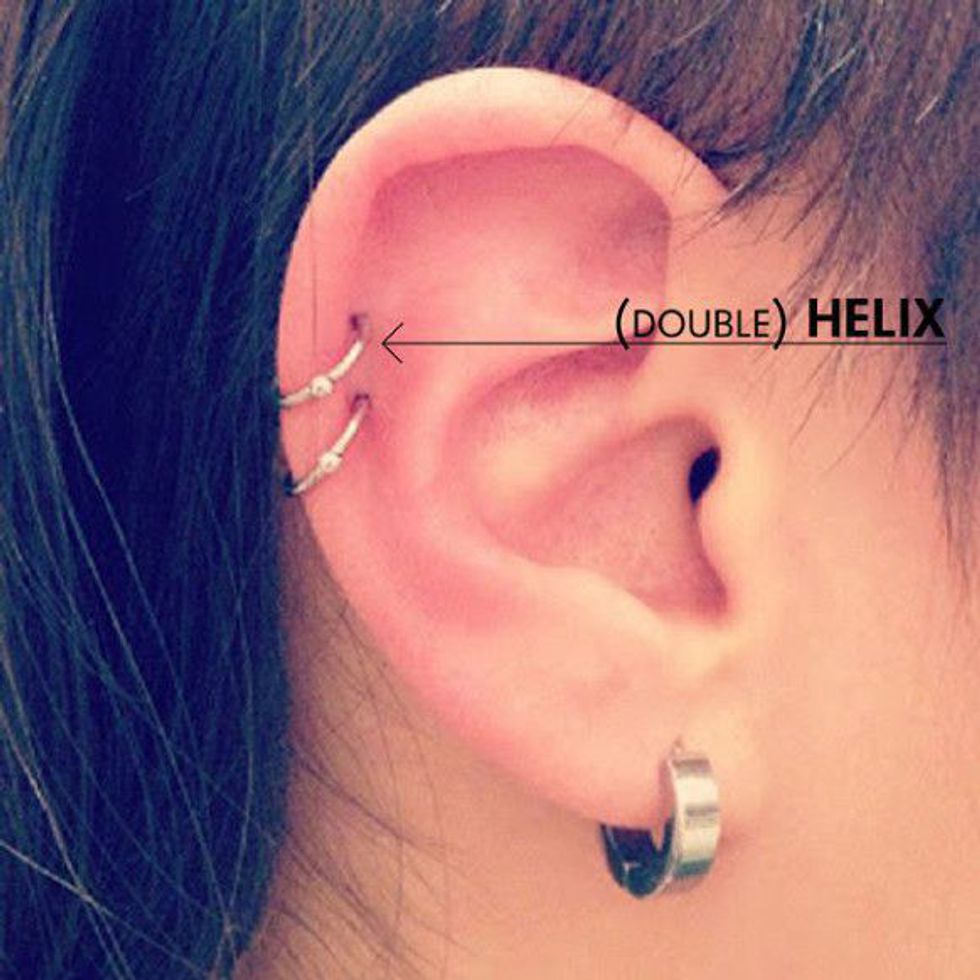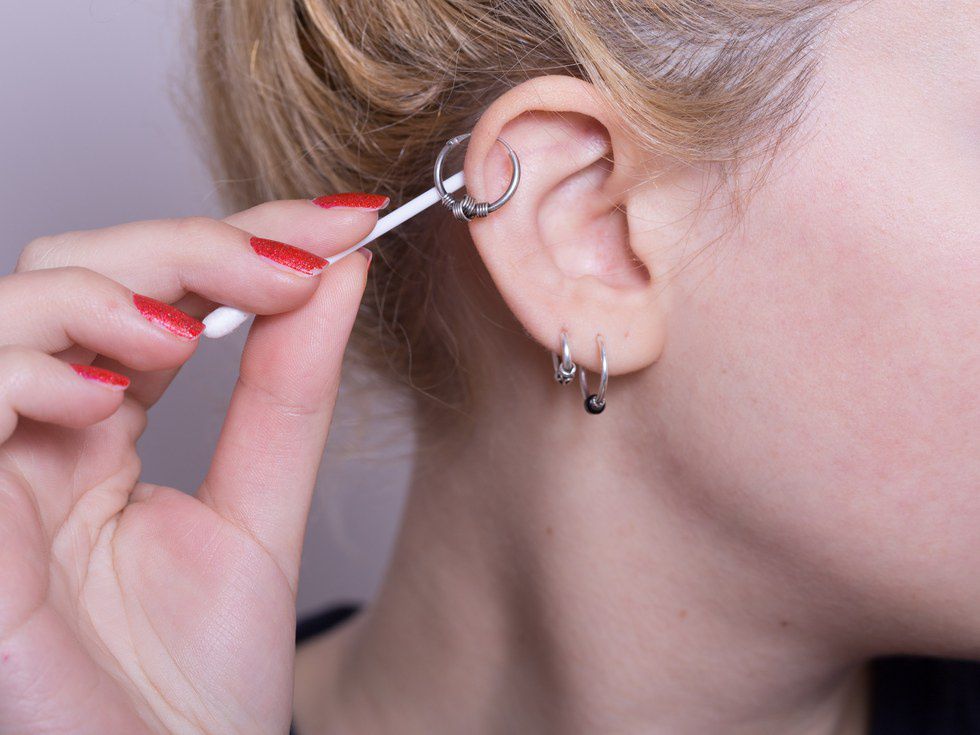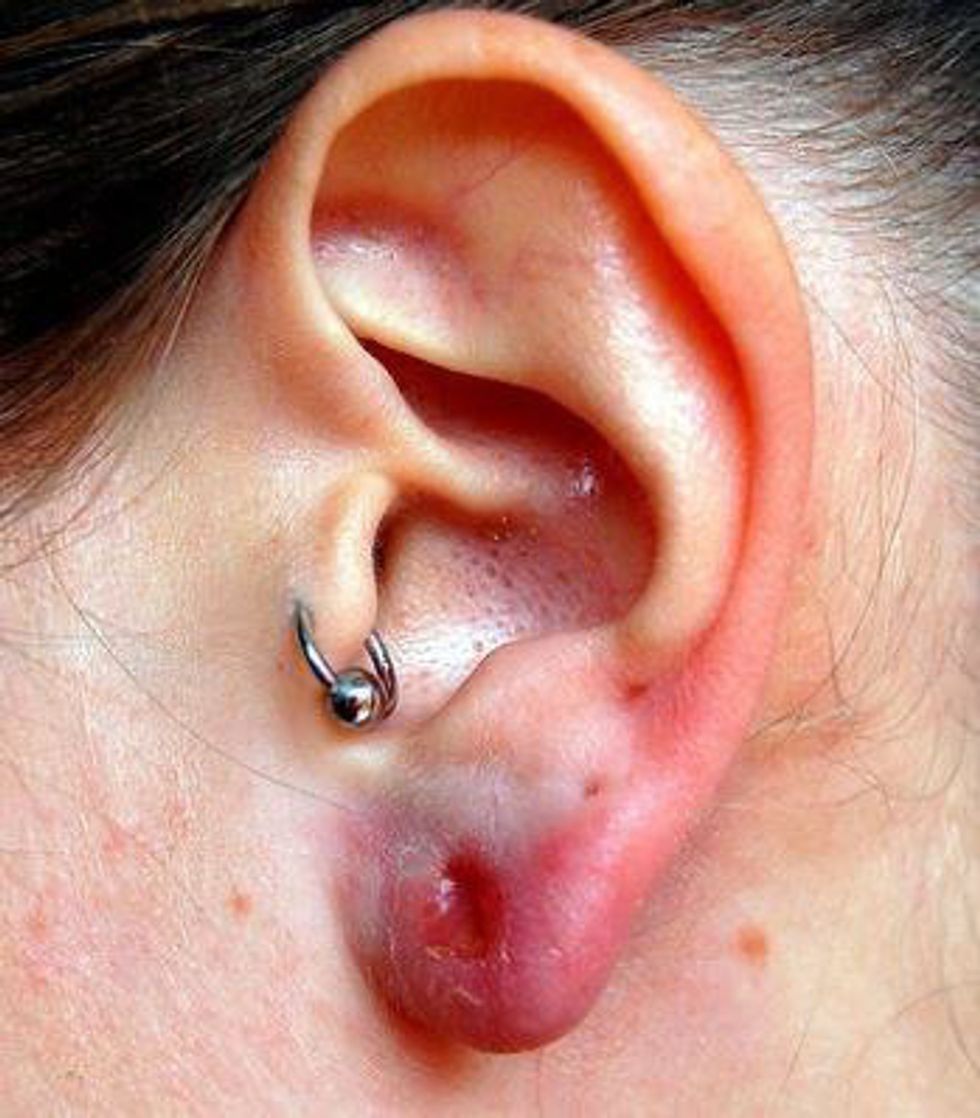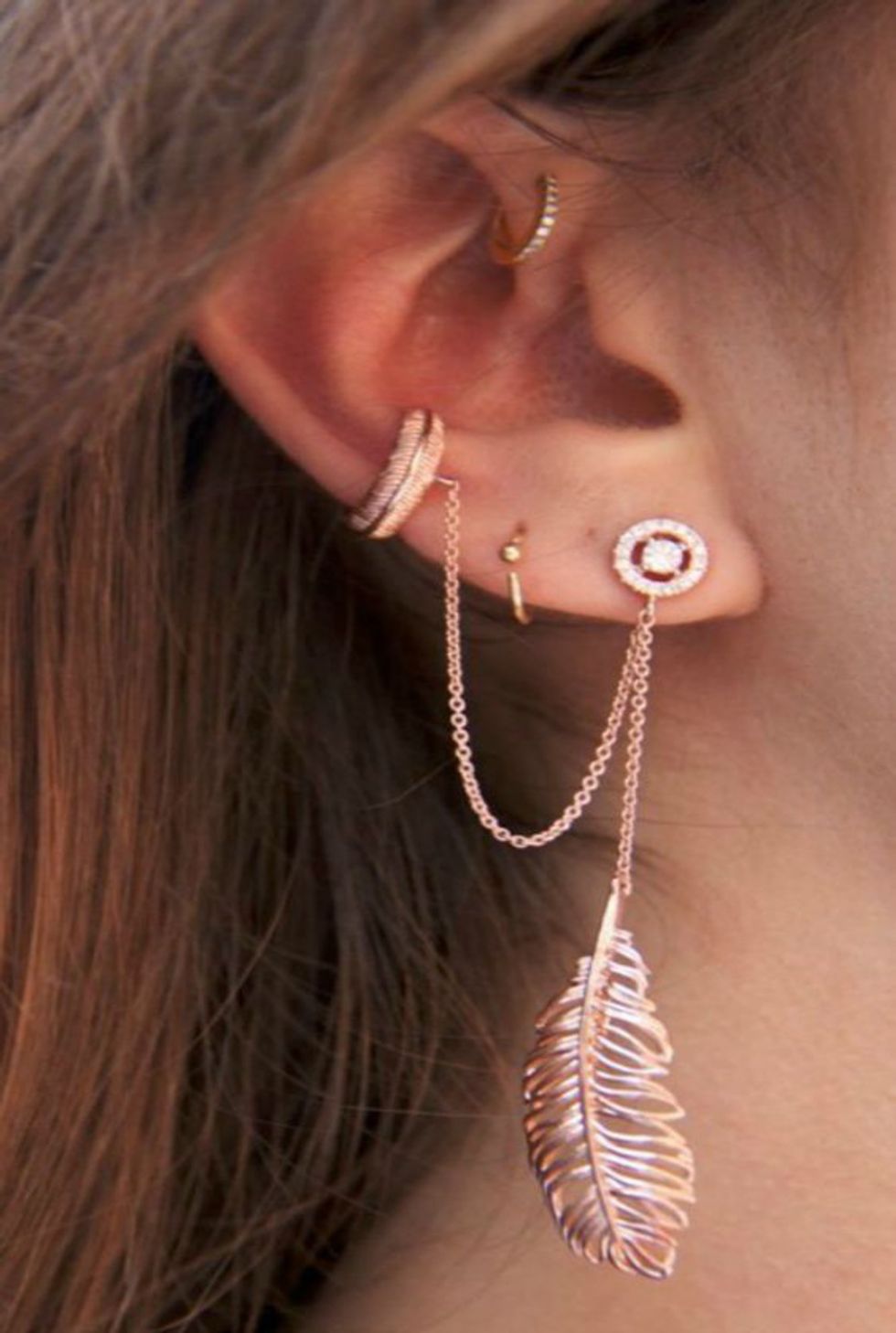A week ago, I got my very first cartilage piercing – a double helix.
I've wanted a cartilage piercing since forever, so the prospect of finally getting it made me feel so giddy that I couldn't help but grin from ear to ear when the piercer finally put the gun to my ear (and if you feel weirded out just by reading that, imagine how the piercer must have felt watching close-up).
Prior to the commitment, I had done a ton of research about cartilage piercings, but nothing quite prepared me for what an adjustment the first week would be.
1. Getting pierced feels like being pinched.
Everyone's level of pain tolerance is different, but for me, on a scale of one to 10, a double helix piercing is a three – so like a hard pinch. My ear was pierced at Claire's with a piercing gun.
Of course, like other people who've researched piercings, I was worried that the gun would shatter my ear because of posts like these and pictures like this (viewer direction advised). So while I still think a needle piercing would be the better option for cartilage piercings, that option was not available for me. Thankfully, the piercer at my local Claire's is experienced and has a few of her own, which helped ease my nerves.
If you would like to get a needle cartilage piercing, contact your local tattoo shops and ask if they have it. However, be warned, tattoo shop piercings can be on the pricier end.
At Claire's alone, the cheapest stud is $18.99, and since I had two holes pierced, the price racked up to $37.98 – and this is all before taxes. Luckily, there happened to be a sale that day which helped nudge the total cost down a bit.
2. The after-care routine can get painful.
I wasn't allowed to wash my ear for the first 48 hours unless it was with the given sterile saline solution. My usual cleaning routine is: loosen earrings, wet cotton ball with the solution, gently wipe and clean, then twist earrings and slightly tighten at the end – and repeat, three times a day.
Everything seemed to be going well until two days later when my ear reacted by turning red sending prickles of pain up my cartilage. I suspected an infection, but then my friend advised me to soak my ears with the solution using a puffy cotton ball. This trick somehow worked to bring down swelling entirely and eliminate the pain in the following hours. As it turned out, I hadn't been thorough enough in my routine. The solution is not just meant to help wipe the piercing clean but to soak into the ear holes.
I've gotten used to the new routine but sleep, on the other hand...
3. Sleep is a struggle.
The first day wasn't so bad besides the expected redness, but the first night was when the real struggle began. I couldn't sleep on my left side without squishing my ear, so I propped another pillow next to the left side of my head so that, if I did turn in the middle of the night, it would stop me from landing on my ear.
I woke up was an hour later in pain because I had shoved the pillow aside in my sleep and landed splat on my pierced ear. So for the second try, I propped a bunched up T-shirt under my head and a small pillow on my left, so that if I do turn left while asleep, the side of my head will just barely rest against the small pillow on the side.
I still haven't adjusted to it yet, but it's a much better alternative than if both my ears were pierced. Then I'd have to sleep dead straight like a mummy.
4. Your ear might get itchy, which may lead to infection.
Because your ear is still getting used to the foreign object lodged through it, it's bound to get a bit itchy – mainly by the fourth day. But remember, do not touch your ear, and do not play with your earrings. A cartilage piercing is not only much more likely to get infected but if it does become infected, you'll need very strong antibiotics which may not even take effect in time. Worse case scenario, your cartilage will literally die and be surgically removed.
This is why cartilage piercings should be reserved for adults or mature young adults – not kids. Most places like Claire's have a legal guardian sign for everyone under 18 and restrict cartilage piercings to ages 12 and up, since kids are more likely to give in to the urge to scratch and pull their ears.
5. For the next six months, do everything slowly and carefully when near your ear.
At the end of the day, as long as you're gentle and clean with your piercings, your ear will heal in three to six months. However, just because it looks healed from the outside doesn't mean it's fully healed on the inside, so continue to maintain your original stud piercings until the end of the six-month period. Then, you can swap your studs out for hoops and other jewelry.
Until then, this means keeping your hair to the side opposite of the piercing or tying it up. It also means no more casually running your hands through your long hair lest you want to risk getting it caught in the stud and yanking your ear. Also, put on your shirts slowly and hoodies even slower. As for caps and hats? You might just have to go without them for a month or so because even the slight pressure of a skullcap can irritate your ear.
So to everyone hoping to get their cartilage pierced, my advice is to get it done in the spring or summer so you don't have to face the cold weather with your ears bared. In the meantime, you can sport some gorgeous ear cuffs like this one. And when you do get your ears pierced, smile wide – cause you've earned it!


























